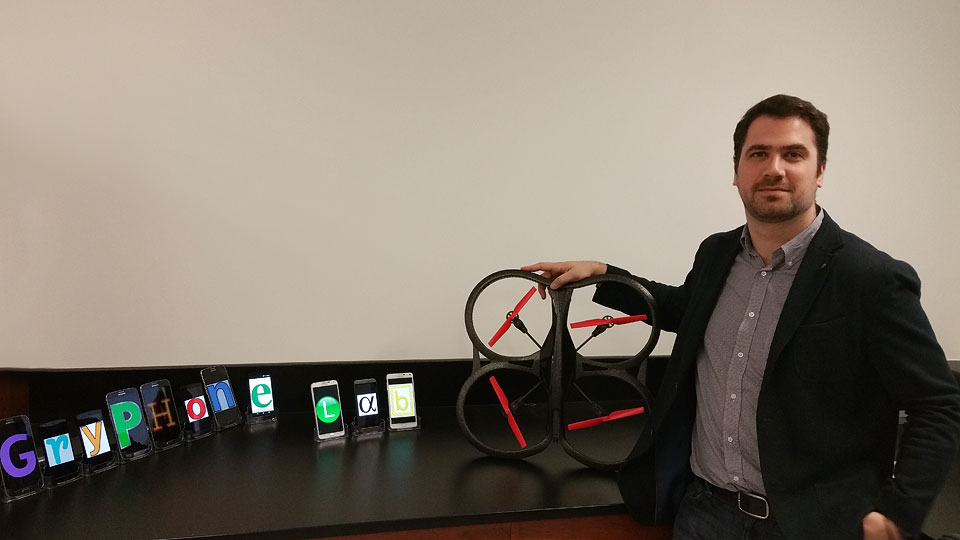
As one of only two smartphone labs in Ontario, U of G’s new GryPHone Lab will give students hands-on opportunities to work with familiar devices in new ways. The lab, which opened in February, will offer its first official course this fall — an interdisciplinary graduate class exploring the different ways smartphones can be used in the students’ various fields of study.
Telus and Google donated the smartphones for the course. The 30 new smartphones from Google will go towards research of the devices, and represents the first donation of its kind by the giant California-based company to a Canadian school, said engineering professor Petros Spachos.
So what can you do with a smartphone? One student in the lab is building an app that allows a smartphone to analyze electrocardiogram data gathered by the phone’s sensors to provide personalized heart monitoring. The phone can then alert the user or notify others if help is needed.
Spachos runs the GryPHone Lab. He demonstrates how an app on his phone can control a drone — the newest addition to the lab — making it fly up and down the hallway. “Some of my students are looking at how these drones might be used in an emergency situation because often the first thing lost is communications,” he says. “The phone can communicate with the drone even if there is no wireless available.” One assignment for his class will be for students to develop a program that makes the drone follow a line drawn on the floor.
People are often surprised to learn how many sensors the average smartphone has and the tasks it’s capable of doing. Most smartphones include a barometer to measure air pressure; a gyroscope to recognize movement; an accelerometer to record how quickly the phone is moving; a thermometer to measure temperature; a proximity sensor that recognizes when the phone is close to another object; a light sensor, and more. “That’s not even including the microphone and the camera, and the additional things it can do involving them,” says Spachos.
Most of Spachos’ research involves sensors of various kinds. For example, tiny sensors that are smaller than a computer mouse can be used in many applications, such as measuring the moisture level in soil where plants are growing, or tracking the movements of salmon or bees. To make the data useful, though, it must be transmitted to a computer and analyzed to determine what it means.
“My work focuses on transmitting and communicating data created by these sensors, and I’m developing energy-efficient, solar powered wireless networks for this process,” says Spachos, who joined Guelph in August 2015.
His communications systems are one aspect of the development of smart cities and the Internet of Things — increasingly, various devices are being connected wirelessly to collect and share data, which enables us to use resources more effectively. “I like to implement systems that will work in the real world,” he says.